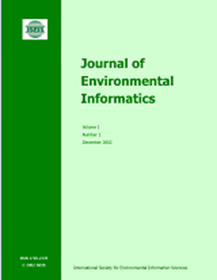Social Media Integration of Flood Data: A Vine Copula-Based Approach
IF 5.4
1区 环境科学与生态学
Q1 ENVIRONMENTAL SCIENCES
引用次数: 0
Abstract
Floods are the most common and among the most severe natural disasters in many countries around the world. As global warming continues to exacerbate sea level rise and extreme weather, governmental authorities and environmental agencies are facing the pressing need of timely and accurate evaluations and predictions of flood risks. Current flood forecasts are generally based on historical measurements of environmental variables at monitoring stations. In recent years, in addition to traditional data sources, large amounts of information related to floods have been made available via social media. Members of the public are constantly and promptly posting information and updates on local environmental phenomena on social media platforms. Despite the growing interest of scholars towards the usage of online data during natural disasters, the majority of studies focus exclusively on social media as a stand-alone data source, while its joint use with other type of information is still unexplored. In this paper we propose to fill this gap by integrating traditional historical information on floods with data extracted by Twitter and Google Trends. Our methodology is based on vine copulas, that allow us to capture the dependence structure among the marginals, which are modelled via appropriate time series methods, in a very flexible way. We apply our methodology to data related to three different coastal locations on the South coast of the United Kingdom (UK). The results show that our approach, based on the integration of social media data, outperforms traditional methods in terms of evaluation and prediction of flood events.洪水数据的社会化媒体整合:基于Vine copula的方法
洪水是世界上许多国家最常见和最严重的自然灾害之一。随着全球变暖不断加剧海平面上升和极端天气,政府部门和环境机构迫切需要及时准确地评估和预测洪水风险。目前的洪水预报一般是基于监测站对环境变量的历史测量。近年来,除了传统的数据来源外,大量与洪水有关的信息已经通过社交媒体提供。市民经常在社交媒体平台上发布有关本地环境现象的资讯和最新消息。尽管学者们对自然灾害期间在线数据的使用越来越感兴趣,但大多数研究只关注社交媒体作为一个独立的数据源,而与其他类型的信息的联合使用仍未进行探索。在本文中,我们建议通过将传统的洪水历史信息与Twitter和Google Trends提取的数据相结合来填补这一空白。我们的方法是基于vine copulas,这使我们能够通过适当的时间序列方法以非常灵活的方式捕获边缘之间的依赖结构。我们将我们的方法应用于与英国(英国)南海岸三个不同沿海地点相关的数据。结果表明,基于社交媒体数据整合的方法在洪水事件评估和预测方面优于传统方法。
本文章由计算机程序翻译,如有差异,请以英文原文为准。
求助全文
约1分钟内获得全文
求助全文
来源期刊

Journal of Environmental Informatics
ENVIRONMENTAL SCIENCES-
CiteScore
12.40
自引率
2.90%
发文量
7
审稿时长
24 months
期刊介绍:
Journal of Environmental Informatics (JEI) is an international, peer-reviewed, and interdisciplinary publication designed to foster research innovation and discovery on basic science and information technology for addressing various environmental problems. The journal aims to motivate and enhance the integration of science and technology to help develop sustainable solutions that are consensus-oriented, risk-informed, scientifically-based and cost-effective. JEI serves researchers, educators and practitioners who are interested in theoretical and/or applied aspects of environmental science, regardless of disciplinary boundaries. The topics addressed by the journal include:
- Planning of energy, environmental and ecological management systems
- Simulation, optimization and Environmental decision support
- Environmental geomatics - GIS, RS and other spatial information technologies
- Informatics for environmental chemistry and biochemistry
- Environmental applications of functional materials
- Environmental phenomena at atomic, molecular and macromolecular scales
- Modeling of chemical, biological and environmental processes
- Modeling of biotechnological systems for enhanced pollution mitigation
- Computer graphics and visualization for environmental decision support
- Artificial intelligence and expert systems for environmental applications
- Environmental statistics and risk analysis
- Climate modeling, downscaling, impact assessment, and adaptation planning
- Other areas of environmental systems science and information technology.
 求助内容:
求助内容: 应助结果提醒方式:
应助结果提醒方式:


